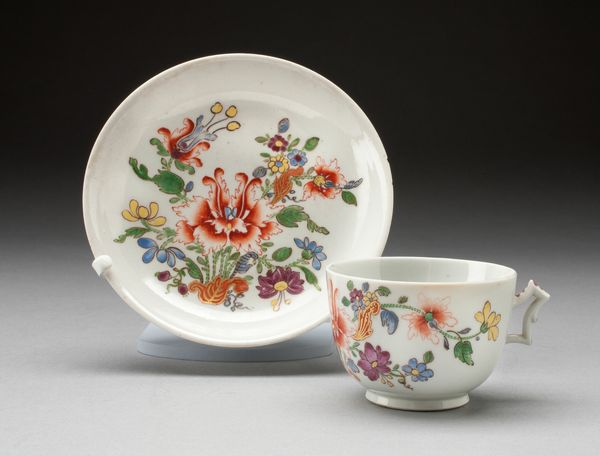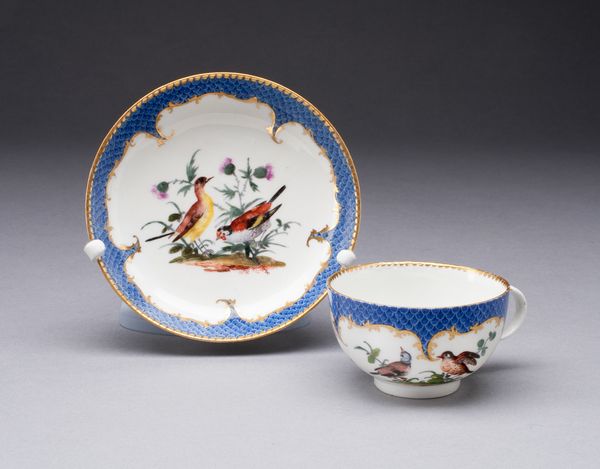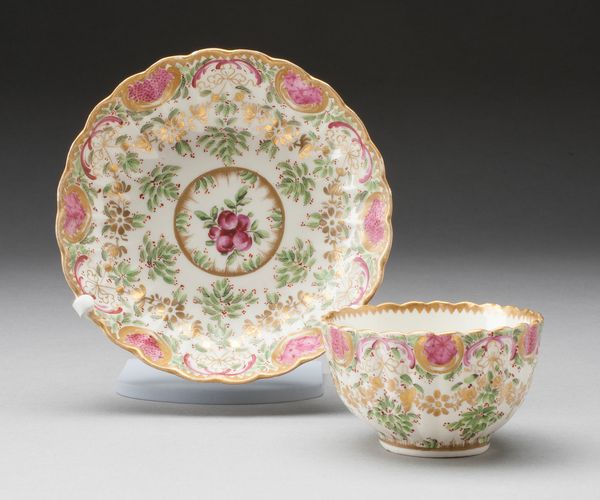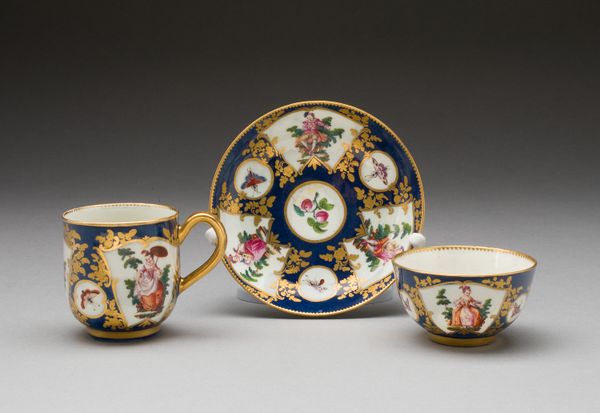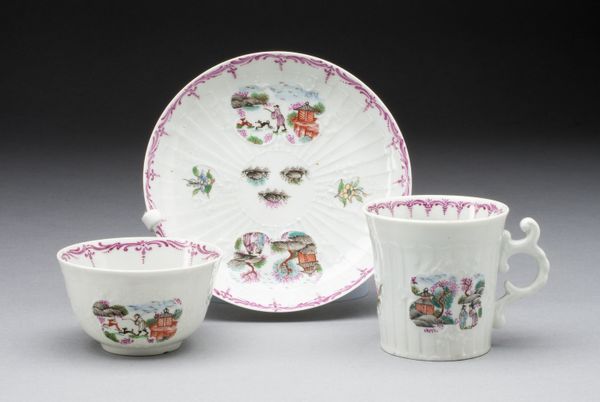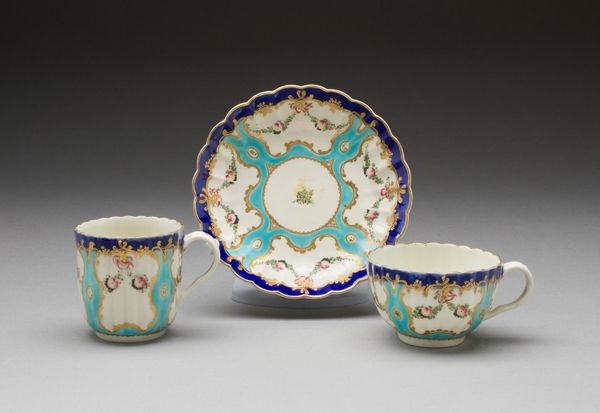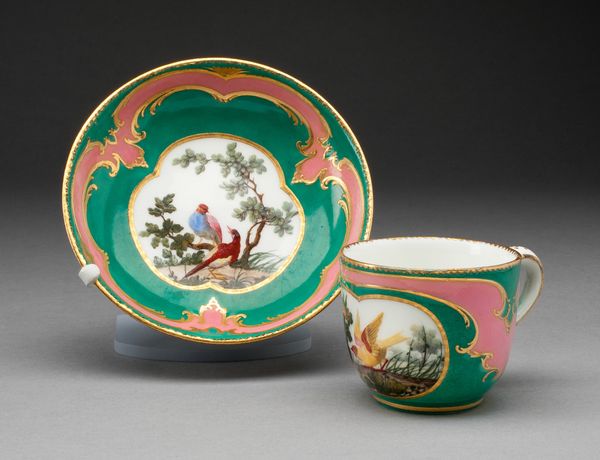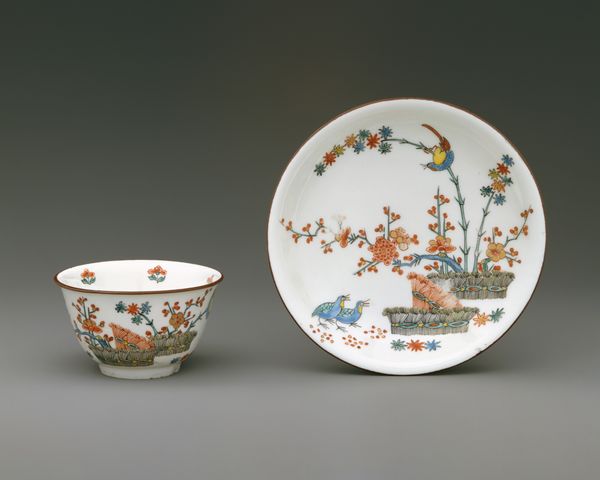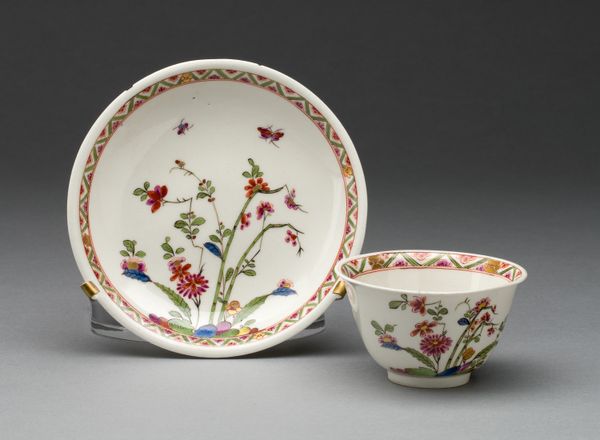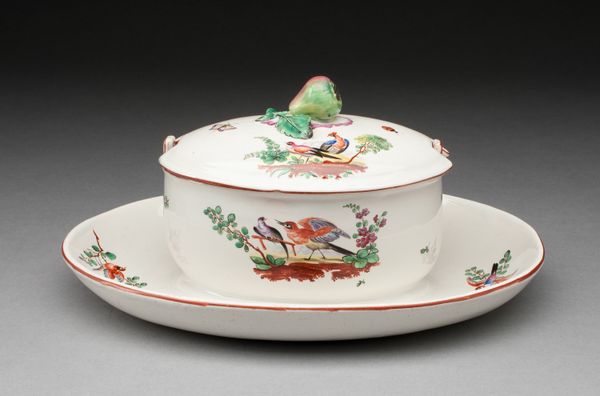
ceramic, porcelain
#
ceramic
#
porcelain
#
ceramic
#
decorative-art
#
rococo
Dimensions: Bowl: H. 4.6 cm (1 13/16 in.); diam. 7.1 cm (2 5/6 in.); Saucer diam. 11.2 cm (4 1/3 in.)
Copyright: Public Domain
Editor: This is "Tea Bowl and Saucer," made around 1755 by the Worcester Royal Porcelain Company. It’s porcelain, and so delicate. I’m really drawn to the asymmetry of the floral design. How do you interpret this work? Curator: Porcelain itself carries so much symbolic weight. Think of its origins in China, its fragility, its association with luxury and trade. But consider also the Rococo period, known for its asymmetry, extravagance, and love of ornamentation. Do you see how this piece reflects the ethos of that era? Editor: Definitely, it’s so ornamental! The floral motifs, even the octagonal shapes, seem deliberate. But is it just about beauty, or does the imagery convey a deeper message? Curator: Look closely at the arrangement. The flowers and insects – perhaps not just decorative. Are they Chinese in style, or a European take on Chinese motifs known as Chinoiserie? They carry memories, echoes of cultural exchange and imperial desire. Consider the butterfly, a symbol of transformation. Editor: So it’s not just a pretty teacup. The decorations connect to something broader: trade, culture… transformation! Curator: Precisely. Objects such as this become vessels – not just for tea, but for shared histories. What do you make of the dragonflies circling the flowers? Editor: I hadn't noticed them before. It looks like nature in motion; maybe the teacup itself alludes to nature through decorative imagery. Curator: It’s all interconnected. Recognizing this interplay enables us to perceive and remember its cultural memory. Editor: That's fascinating! Now when I look at it, it's like this piece isn’t just an object. It's a story. Curator: Exactly. It’s the continuity of visual language speaking through time.
Comments
No comments
Be the first to comment and join the conversation on the ultimate creative platform.

